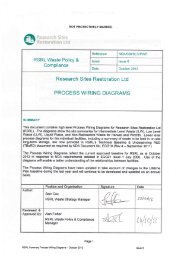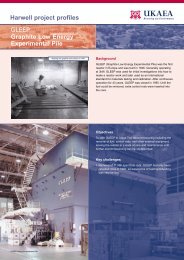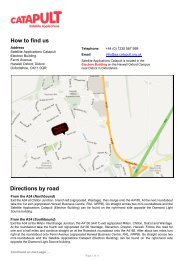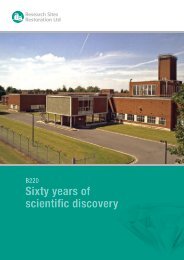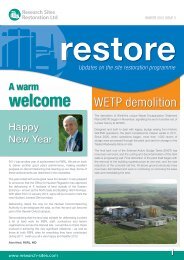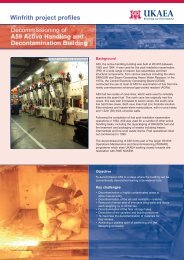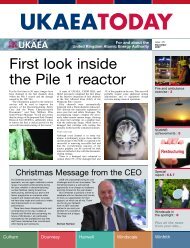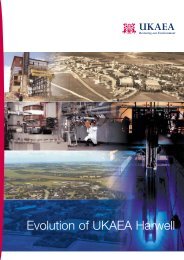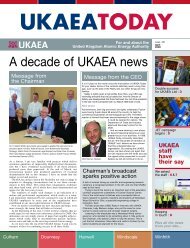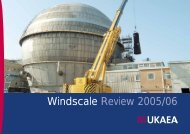RSRL Integrated Waste Strategy - Issue 5- Oct 2012.pdf
RSRL Integrated Waste Strategy - Issue 5- Oct 2012.pdf
RSRL Integrated Waste Strategy - Issue 5- Oct 2012.pdf
Create successful ePaper yourself
Turn your PDF publications into a flip-book with our unique Google optimized e-Paper software.
NOT PROTECTIVELY MARKED269. A major source of hazardous non-radioactive waste is asbestos which arises primarilyduring decommissioning operations. The asbestos is removed under controlled conditionsand sent to a specialist disposal contractor.270. Bulk lead is used extensively for shielding and where possible the strategy is to removeany radioactivity as lead shavings and consign them to the LLWR. The remaining clean orexempt (‘out of scope’) bulk lead is recycled by selling directly to the marketplace.271. Routine hazardous wastes arising from the office environment, such as batteries andprinter cartridges, are managed under the site-wide Facilities Services Contract.272. Zinc bromide is used in shield windows. Records and experience show that the zincbromide at Harwell should not be contaminated. When the time comes to dispose of thezinc bromide, a sampling and monitoring regime will be devised to confirm that it can berecycled via a specialist contractor. If recycling is not possible, incineration will be pursued,as recommended by the site waste BPEO study.273. Small quantities of mercury are expected to arise during decommissioning operations.Items will be monitored and sent to a specialist contractor for disposal at a hazardous landfillafter first consolidation with any similar materials from Winfrith. In the site waste BPEOstudy, re-use was identified as the preferred option for mercury. However it would benecessary to secure a third party willing to accept the material for re-use hence the fallbackoption of disposal at a hazardous landfill will continue. Contaminated mercury is identifiedas an orphan waste by LLWR and development of a route for this waste is currently anaction under the National <strong>Waste</strong> Programme.274. The strategy for oils and solvents is incineration and a permit in place for commercialincineration via the LLWR contact. Chemicals are stabilised as appropriate and consignedto a specialist disposal contractor.6.3.2 Non-Hazardous Non-Radioactive <strong>Waste</strong>275. Non-hazardous waste covered in this section is the material that is neither hazardousnor inert under EPR2010. It includes plastics, glass, wood and building rubble not suitablefor reuse. Management routes for non-hazardous non-radioactive waste are given below.TypeMetalOffice wastesSoft Strip<strong>Waste</strong> Management RouteRecycleRecycle paper cardboard, plastic, books, newspaper and cans.Dispose of non-recyclable office waste.Disposal to non-hazardous landfill276. The strategy for non-hazardous waste is to recycle where possible and to minimise thevolumes consigned to landfill. This is consistent with the preferred option determined in thesite waste BPEO study.277. The waste produced from excavating the foundations for the new ILW store is expectedto be non-radioactive non-hazardous soil that will be reused as in-fill on-site. Thus there isno requirement for a Site <strong>Waste</strong> Management Plan as given in DEFRA’s non-statutoryguidance.<strong>RSRL</strong> IWS (<strong>Issue</strong> 5 – <strong>Oct</strong>ober 2012)77




